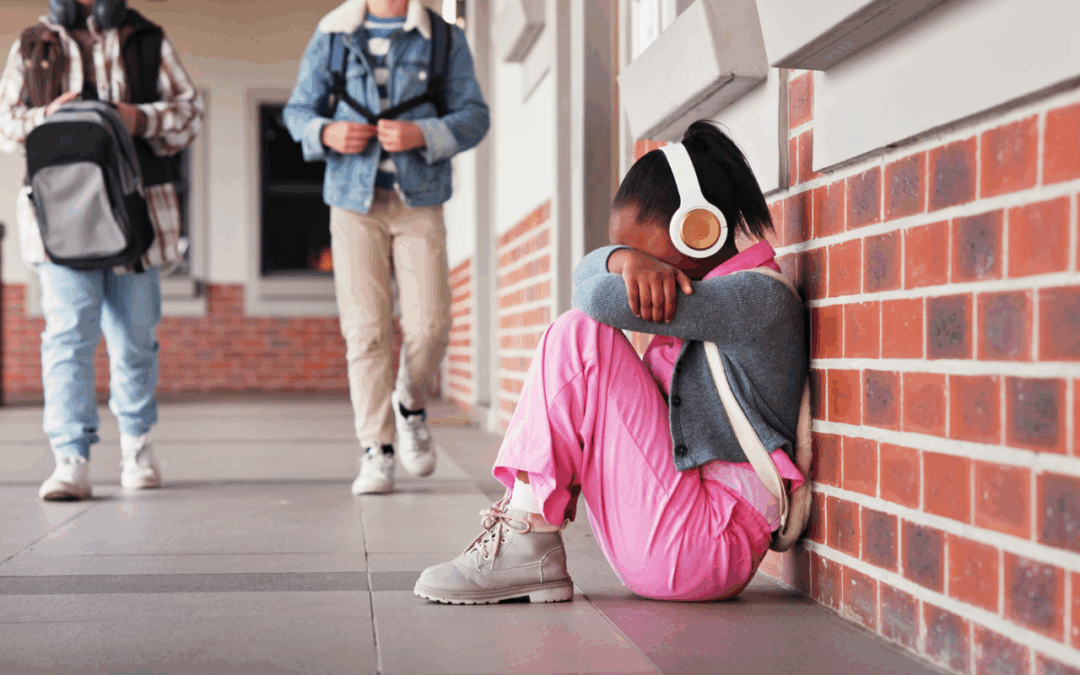The start of a new school year brings fresh notebooks, sharpened pencils, and the excitement of seeing friends again.
But for some children, it also brings something less visible—anxiety.
Back-to-school transitions can trigger big emotions, and while some jitters are normal, ongoing changes in mood or behavior may be early signs of anxiety in kids.
The tricky part? Anxiety in children often doesn’t look like anxiety in adults. Instead, it can show up as irritability, clinginess, physical complaints, or sudden changes in school performance.
As parents, it can feel overwhelming to spot these signs while juggling your own responsibilities. Knowing what to watch for and how to respond can make a real difference— not only for your child, but for your own peace of mind.
How do I know if my child has anxiety?
Recognizing signs of anxiety in kids can be challenging because children often don’t have the words to explain how they’re feeling. Instead, their anxiety may show through behavior.
Some common indicators include:
- Changes in sleep patterns – Trouble falling asleep, nightmares, or waking frequently.
- Avoidance behaviors – Suddenly refusing to go to school, join activities, or be away from you.
- Physical complaints – Headaches, stomachaches, or feeling “sick” before school.
- Emotional shifts – More frequent meltdowns, irritability, or tearfulness.
- Loss of interest – Activities they once loved no longer appeal to them.
While one or two of these signs might simply be part of a temporary adjustment, a cluster of them—especially if they persist—could point to ongoing anxiety. The earlier you recognise the signs of anxiety in kids, the sooner you can help them cope.
Muscle Tension and Release for Kids with Anxiety
Muscle tension and release is a simple grounding exercise that helps children connect with their bodies and release anxious energy. By tensing and then relaxing different muscle groups, kids can physically feel the difference between stress and calm.
Here’s how it works for kids:
- Clench your fists tight – Hold for 5 seconds… then let go.
- Squeeze your shoulders up to your ears – Hold for 5 seconds… then relax.
- Press your legs together or stomp your feet hard – Hold for 5 seconds… then release.
Encouraging kids to notice how their body feels before and after each release helps them build awareness of physical tension and learn how to let it go. This technique can be especially useful during transitions, before bedtime, or when they feel overwhelmed.
What are 5 warning signs of anxiety in school?
Every child expresses anxiety differently, but there are some clear patterns that can show up during the school day. These are key red flags to look for:
- Frequent nurse visits – Regular complaints of stomachaches or headaches at school, often without a medical cause.
- Classroom avoidance – Asking to leave class often, skipping assignments, or avoiding participation in group activities.
- Test or performance distress – Intense worry, freezing up, or even crying before presentations, quizzes, or exams.
- Social withdrawal at school – Eating lunch alone, avoiding recess or group projects, or pulling away from friends.
- School refusal or morning battles – Frequent tears, arguments, or physical complaints right before school starts.
If these signs show up consistently and don’t fade after the first few weeks, it may be time to connect with school staff, a pediatrician, or a therapist for added support.
How to calm an A kid experiencing anxiety
When you see the signs of anxiety in kids, it’s natural to want to “fix” it right away. But sometimes, the most powerful thing you can do is create a safe, calm environment for them to feel understood.
Here are a few strategies:
- Validate their feelings – Instead of saying, “Don’t worry,” try, “I can see this is making you nervous, and that’s okay.”
- Practice breathing exercises – Slow, deep breaths can help regulate the nervous system. Try “smell the flower, blow the candle” as a child-friendly version.
- Create a calming routine – A predictable bedtime, morning routine, or after-school ritual can reduce uncertainty.
- Role-play scenarios – Practice common anxiety triggers, like introducing themselves to a classmate, so they feel more prepared.
- Break tasks into small steps – Help them tackle schoolwork or social challenges in manageable pieces.
Even small shifts in how you respond can reduce the intensity of anxiety and help your child build coping skills.
The takeaway for parents
Back-to-school season can magnify signs of anxiety in kids, but with the right awareness and tools, you can help your child navigate the transition more smoothly.
If you notice ongoing behavioral or emotional changes, trust your instincts. Early support—whether that’s extra reassurance at home, help from teachers, or guidance from a mental health professional—can prevent anxiety from becoming a long-term struggle.
Because every child deserves to feel safe, confident, and supported as they step into the school year ahead.
And as a parent, you have the power to help make that happen.
If you’re experiencing an emergency, please use the information found here.
Location
8 South Michigan Avenue,
Suite 2300
Chicago, IL 60603

